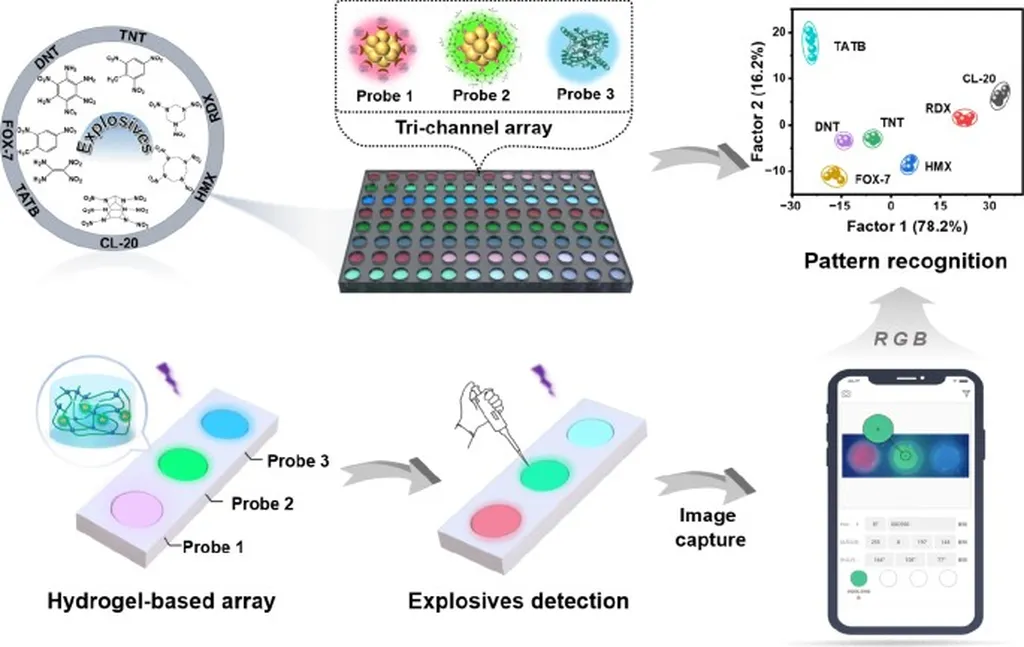In the heart of Vietnam, researchers have developed a novel sensor that could revolutionize how we monitor water quality, particularly in industrial settings. Dr. Minh-Kha Nguyen, from the Faculty of Chemical Engineering at Ho Chi Minh City University of Technology (HCMUT), has led a team to create a hydrogel-based colorimetric sensor capable of detecting copper ions (Cu²⁺) with high sensitivity and selectivity.
Copper ions are a significant concern in environmental monitoring due to their toxicity and bioaccumulative nature. Traditional methods of detecting Cu²⁺ often involve complex instrumentation and time-consuming processes. However, this new sensor offers a simple, cost-effective, and rapid alternative.
The sensor is based on a hydrogel matrix functionalized with L-cysteine and HAuCl₄. When Cu²⁺ ions are present, they interact with the thiol groups of L-cysteine, which are strongly chemisorbed onto the surface of gold nanoparticles (AuNPs) synthesized within the hydrogel. This interaction causes the AuNPs to agglomerate, resulting in a distinct color change that can be observed with the naked eye.
“This sensor is not just about detecting copper ions; it’s about providing a practical, user-friendly tool for environmental monitoring,” said Dr. Nguyen. “The color change is immediate and requires no specialized equipment, making it ideal for on-site testing in industrial and environmental settings.”
The sensor’s high selectivity means it can distinguish Cu²⁺ from other metal ions, ensuring accurate results even in complex water samples. With a detection limit of 10 μM Cu²⁺, it is highly sensitive, capable of detecting even trace amounts of copper ions.
The implications for the energy sector are significant. Industrial activities, particularly those involving mining, smelting, and manufacturing, often release copper ions into water sources. Regular monitoring is crucial to prevent environmental damage and ensure compliance with regulatory standards. This sensor provides a rapid, cost-effective solution for such monitoring, potentially saving industries substantial costs in environmental remediation and regulatory fines.
Moreover, the sensor’s simplicity and portability make it suitable for use in remote or resource-limited settings, where access to advanced laboratory equipment may be limited. This could be particularly beneficial for developing countries, where industrial activities are expanding, and environmental monitoring is critical.
The research, published in the journal Materials Research Express (translated to English as “Materials Research Express”), highlights the potential of functionalized hydrogel matrices in environmental safety applications. As Dr. Nguyen notes, “This is just the beginning. The principles we’ve demonstrated here could be applied to detect other contaminants, opening up new avenues for environmental monitoring and protection.”
The development of this sensor underscores the importance of interdisciplinary research in addressing global challenges. By combining principles from chemistry, materials science, and environmental engineering, Dr. Nguyen and her team have created a tool that could significantly impact industrial practices and environmental safety.
As industries continue to expand and environmental regulations become more stringent, the need for efficient and reliable monitoring tools will only grow. This research not only meets this need but also paves the way for future innovations in the field of environmental sensing.

